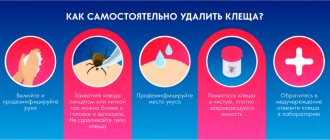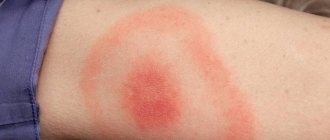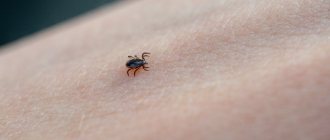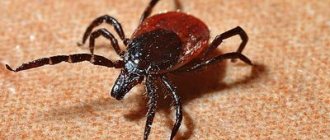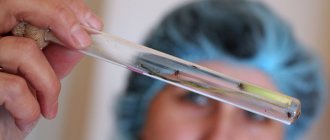Doctors often use ICD-10; a tick bite also has its own code in this classification. This is a small arachnid insect up to 3 mm in length. It lives throughout the planet. There are many varieties. Some of them are predators. Others eat organic remains. But there is also a large group that are blood-sucking. They parasitize not only animals, but also humans. However, it is not only the bite itself that is dangerous. The tick can cause infection such as hemorrhagic fever, encephalitis or borreliosis. According to statistics, a few people bitten by ticks later get sick or are carriers of the virus, but you must go to the hospital and have laboratory tests done to be absolutely sure of your own health. In addition, it is not at all clear from the tick itself whether it is infected with anything or not.
International Classification of Diseases
In any industry, uniform systems and standards are always established.
This also applies to medicine. There is a special classification - ICD-10. The abbreviation stands for International Classification of Diseases. This is a normative document that is the basis. It is used by doctors and other specialists all over the world. ICD-10 is revised every 10 years. The publication includes 3 volumes with instructions. The purpose of the ICD is to create conditions for the effective collection, processing and analysis of data on diseases and mortality in various regions of the country and around the world. Thanks to this classification, diagnoses are converted into a code value of numbers and letters. This facilitates the process of storing, retrieving and analyzing information. The international classification ensures commonality in methodological approaches to comparing information.
The tick bite itself has the code B88.8. Class in the international classification of diseases – 1st. These are parasitic and some infectious diseases. As for the section, this is “Pediculosis, acariasis and other infestations.”
There are other diagnoses in this section. For example, B88.0 is a different acariasis. Code B88.1 refers to tungiasis - this disease concerns problems with the sand flea (tropical variety). All other arthropod infestations are listed under number B88.2. External hirudinosis is designated as B88.3, and if the infestation has an unspecified form, then the code B88.9 is written.
If the patient became infected with spring-summer tick-borne encephalitis from a tick, then code A84.0 is set. If there is no clarification on tick-borne encephalitis, then the number A84.9 is written. If a patient is diagnosed with Lyme disease or borrelitis after a tick bite, then number A69.20 is assigned.
Basic provisions of the International Classification of Diseases
International Classification of Diseases (ICD) is a generally accepted normative document that reflects the statistical classification of diseases. Used for the purpose of unifying teaching aids and comparability of medical materials. Leading medical specialists from around the world, including Russia, took part in the development.
The location for revisions of the ICD is the headquarters in Geneva. All participants are active members of the World Health Organization (WHO).
Historical reference. Attempts to systematize all diseases were made back in the 18th century in France. However, at that time the classification was based on the causes of mortality in the population. Subsequently, it was supplemented and revised every ten years.
Full name ICD-10, International Statistical Classification of Diseases and Related Health Problems, Tenth Revision. It was adopted for use in Russia in 1993.
The convenience of this classification when transferring medical data is noted, while maintaining the confidentiality of patient information to a certain extent.
The complete original collection of ICD-10 in printed form consists of three volumes:
- Volume 1. Special lists of statistical development. Has two parts.
- Volume 2. Collection of instructions on the application and use of the classification.
- Volume 3. Alphabetical index to classification.
The printed version in Russian is presented in the form of a two-volume book.
The principle of constructing a modern classification is based on the use of alphanumeric coding. Statistical data is combined into groups:
- epidemiological diseases,
- general diseases,
- local diseases, taking into account anatomical areas,
- developmental pathologies,
- injuries.
For simplicity, a four-level hierarchical structure is used:
- Classes. There are 21 of them in total. They are presented in the form of letters of the Latin alphabet, taking into account the digital range from 0 to 99.
- Blocks. Mostly homogeneous, denoted by a capital Latin letter and a digital range.
- Three-digit rubrics. Indicate what type of disease it is.
- Four-character headings. Specify the disease for a three-digit rubric. In this case, the number after the period is used.
To read: Description of symptoms and treatment of subcutaneous mites in cats
Symptoms of infection
Ticks are most active between the beginning of April and the end of June. The maximum number of such parasites is recorded in the last month of spring. But in July, many individuals die due to extreme heat.
These insects are characterized by low mobility. They cannot fly, but they move quite quickly. To catch their prey, they usually just sit in the grass or on low tree branches and wait. As soon as a person approaches this place, the behavior of the parasite quickly changes. He immediately spreads his paws and tries to cling to the future victim. They are usually attached to the neck, shoulders, armpits or other open places where the parasite will be warmest. They can be located on the arms and in the crook of the knee, on the scalp, in the groin area or behind the ears.
When a tick bites a person, he does not feel anything. This is due to the fact that the parasite’s saliva contains a special substance that has anesthetic properties. So the bite is completely painless. When a tick has bitten through the skin, it moves its proboscis through the tissue to find a blood vessel and bites through it. Further on the proboscis there are special devices, so it will not be possible to tear the proboscis out of a person’s skin, since the tick is firmly fixed. In this position, it can continue to absorb fluid from the blood vessel.
The intensity of symptoms after a bite depends on how many parasites attacked the person, the person's size and general health. The signs of a bite are most pronounced in children and the elderly, as well as in those who have a history of various chronic diseases. Symptoms are more intense in patients with an allergic reaction or immunodeficiency.
The first symptoms appear in a person approximately 3 hours after he is bitten. Usually the patient feels weak and is constantly in a sleepy state. He develops chills, fear of light, aching joints and muscle pain. After this, other symptoms appear. Body temperature rises to 37.5-38 ºС. At the same time, tachycardia begins (more than 60 beats per minute) and blood pressure decreases. The lymphatic vessels closest to the bite increase in size. The person feels itching, which gradually intensifies. Redness and rash appear at the site of the bite.
As for the strongly expressed responses of the body of a bitten person, headache and nausea may occur. Some people experience frequent bouts of vomiting. Sometimes it becomes difficult to breathe, and the breathing itself comes with wheezing. Nervous manifestations are also characteristic. Sometimes even hallucinations occur.
In general, it is quite easy to spot a tick on a person’s body. It usually resembles a raised mole, and the legs look like hair growing from it. Having attached itself to a blood vessel, it can remain on the victim’s body for a long time.
Tick bite and its codes according to ICD-10
The tick clings to clothing and quickly moves to a warm place where it has closest access to blood vessels. The insect bite itself remains painless for humans, since at the moment of biting the skin, a special secretion with anesthetic properties is released from special glands in the oral apparatus.
The parasite not only sucks blood from the vessels, but also injects its saliva, which, entering the systemic bloodstream, causes general reactions of the body. A person bitten by a tick may experience the following symptoms:
- weakness,
- headache,
- joint pain,
- increase in body temperature to 38.5°C,
- tachycardia.
For tick bites, code B88.9 in ICD-10 is used. When diagnosing tick-borne encephalitis, a different coding is assigned, A84.0. What does the transition from the category of non-communicable diseases to the category of infectious diseases mean?
Lyme disease occurs as a result of infection with borreliosis, which is widespread in Europe and Asia. The following symptoms will be characteristic:
- A red rash in the form of circles with a clear center appears near the bite site,
- after 12 hours, fever occurs, accompanied by profuse sweating,
- worried about pain in the joints,
- General weakness, headaches and pale skin occur.
In the ICD, 10 borreliosis is classified in the group Infections caused by spirochetes, code A69.2.
Tick-borne encephalitis is a dangerous epidemic disease that, if not detected in time, can be fatal.
The peculiarity of the course is the erased manifestation of clinical symptoms. Many patients believe it is just the flu and do not pay due attention to their health.
To read: What is the best mouse repellent to use in a private home?
However, the infection quickly spreads throughout the body and on the third day begins to damage the nervous system. After the main symptoms of the flu (weakness, high fever, headache, cough), symptoms of damage to brain structures appear. In the Classifier, this disease is coded A84.0 , Tick-borne viral encephalitis.
Important! If the first symptoms of the disease appear and if you find an embedded tick on yourself, consult a doctor immediately!
Read more about the symptoms of tick-borne encephalitis in humans
Possible consequences of infection
First of all, it is necessary to remove the blood-sucking parasite. If you manage to extract it while still alive, then you need to store it at ambient temperature. If it turns out to be crushed, then you need to place it in a special container with ice. Then it needs to be taken to a laboratory or hospital. This is necessary so that specialists examine it for the presence of pathogens.
Getting a tick is quite easy.
The main thing is to pull it out completely and not leave the proboscis and head in the victim’s body. So everything needs to be done very carefully. It is best to immediately go to the hospital, where this will be done with special instruments. But you can cope with improvised means. To do this, you need to take a wide ring, cover the parasite with it and fill everything with sunflower oil. The tick suffocates and dies. Then it is easy to remove it from the wound. You can use threads and gradually pull out the proboscis using circular movements.
As for first aid for a bite, the parasite can cause an allergic reaction. It can be detected by swelling, redness, muscle pain, and breathing problems. These signs indicate angioedema, which is dangerous for humans. The patient must take a drug with antihistamine properties. Suprastin, Claritin, Telfast are suitable for this. It is imperative to ventilate the room or take the patient out into fresh air. Next you need to give Dexamethasone or Prednisolone. Further diagnosis and treatment of the patient is carried out in medical institutions.
A tick bite in itself is not dangerous, since all symptoms will gradually disappear as soon as the parasite is removed from the victim’s body. Not all ticks are infected and pose a threat to human life and health. The sooner the tick is removed from the victim's body, the lower the risk of infection. The following diseases are identified that a person can catch from a blood-sucking arthropod parasite.
Symptoms of tick-borne encephalitis
This is a disease caused by a viral infection. The main symptoms are as follows. A person begins to show all the signs of general intoxication of the body. Body temperature rises. In severe cases, damage to the central nervous system subsequently begins. It could be meningitis or encephalitis. The consequences are permanent neurological changes. In severe cases, it leads to death or disability. The first symptoms of this disease appear only after 8-11 days. Prevention is the administration of immunoglobulin in the first 3 days after a tick attack.
Tick-borne encephalitis should be treated in a hospital when the patient has a fever and for another week after it ends. Ribonuclease, Prednisolone and blood substitutes are prescribed. If a person develops meningitis, a large dose of vitamins C and B is required. In case of breathing problems, intensive ventilation is prescribed. During the rehabilitation period, anabolic steroids, drugs from the nootropic group, tranquilizers, etc. are prescribed. In some cases, antibiotics are prescribed. But this depends on the causative agent of the disease itself. The doctor selects the drug.
Tick-borne encephalitis (Spring-summer tick-borne meningoencephalitis, Tick-borne viral encephalitis)
The latent or incubation period of the disease lasts approximately 1-2 weeks. But both fulminant forms, when 24 hours pass from the moment of infection to the first signs, and protracted forms of the disease, with an incubation period of up to 1 month, can occur.
During the latent period, viral particles multiply intensively at the site of penetration (skin wound or intestinal wall), then enter the blood and are spread throughout the body. It is this moment that marks the appearance of the first clinical symptoms. The second peak of flavivirus reproduction occurs in internal organs (central nervous system, kidneys, lymph nodes, liver).
All forms of tick-borne encephalitis (febrile, meningeal, focal) have common initial symptoms. The disease begins acutely; in many cases, the patient can clearly indicate even the hour when his condition sharply worsened. The first symptoms are reminiscent of the flu: chills, muscle aches, arthralgia, headache, weakness, lethargy, vomiting and convulsions may be observed against the background of a sharp rise in body temperature (typical for children). Upon examination, attention is drawn to redness of the skin of the face, neck up to the collarbones, and the whites of the eyes with dilated blood vessels. The subsequent course of the disease directly depends on the form in which it will occur in a particular patient.
Feverish form
Tick-borne encephalitis in this form occurs with a predominance of a febrile state, which can last from 2 to 10 days. In most cases, it is of a wave nature, that is, after the first rise in temperature and the subsequent subsidence of clinical manifestations, the disease seems to return again and is followed by a new attack of fever, lasting several days. After about 10 days, the body temperature returns to normal, and the patient’s general condition improves. However, weakness, lack of appetite, palpitations, and sweating can be observed for another 1 month after laboratory recovery (according to the results of blood and cerebrospinal fluid tests).
Meningeal form
This form is characterized by the appearance on days 3-4 of the disease of signs of meningitis - damage to the membranes of the spinal cord and brain. Manifested by the following symptoms: severe headache, which is not relieved by painkillers; vomiting, increased sensitivity of the skin, when even touching clothing to the body causes pain; rigidity (strong tension) of the neck muscles, which leads to involuntary tilting of the head back; Kernig's symptom - the inability to voluntarily straighten a leg at the knee that is bent at right angles at the knee and hip joint in a supine position; upper and lower Brudzinski's symptoms - when the doctor tries to tilt the patient's head forward (chin to chest) and when pressing on the pubis, a reflex flexion of the legs occurs in the knee and hip joints.
All these manifestations of the disease are united by the concept of meningeal syndrome and mean that the tick-borne encephalitis virus has reached the membranes of the spinal cord and brain. Fever and meningeal symptoms last for approximately 2 weeks. After normalization of temperature, patients continue to experience asthenia (weakness, lethargy), poor tolerance of bright light, loud sounds, and depressed mood for a long time (up to 2 months).
Focal form
It is one of the most severe and most unfavorable prognosis forms of tick-borne encephalitis. It is based on the penetration of the pathogen into the substance of the brain and spinal cord. It is characterized by a sharp increase in body temperature to 40°C and above, with lethargy, drowsiness (hypersomnia), vomiting, convulsions, and chills.
Symptoms of damage to the brain substance are observed with the occurrence of hallucinations, disorders of consciousness, delusions, and disturbances in the perception of time and space. When the brain stem, in which the centers responsible for providing vital functions are located, is involved in the process, respiratory and cardiac dysfunction may be observed. When the virus enters the cerebellar tissue, a disturbance in the sense of balance and trembling in the arms and legs develops. When the spinal cord is damaged, flaccid (with decreased muscle tone) paresis and paralysis of the muscles of the neck, shoulders, upper chest and suprascapular region occur. When the virus penetrates the roots of the spinal cord, radiculitis occurs - pain along the nerve, disruption of voluntary movements, the functions of internal organs, the appearance of skin sensitivity disorders in those parts for which the affected root is responsible.
The focal form of tick-borne encephalitis can be of a two-wave nature (two-wave viral meningoencephalitis), when the first attack of the disease is similar to the usual febrile form, and a few days after the body temperature normalizes, symptoms of damage to the substance of the brain and spinal cord suddenly appear.
A special form of tick-borne encephalitis is progressive, which can develop after any other form of the disease. It is characterized by the development of persistent dysfunctions of the brain and spinal cord several months or even years after the acute period of the disease.
Signs of Borreliosis
This disease is known as Lyme disease. It is also an infectious disease caused by special bacteria. Borreliosis has significant polymorphism in the clinical picture. The patient always begins to show signs of general intoxication. Body temperature rises and headaches occur. The patient gets tired quickly. A characteristic symptom of this disease is a rash of a migrating nature. The bacterial infection affects various internal organs, as well as the heart, blood vessels, musculoskeletal system, and nerve fibers. Damages especially affect those systems and organs that have a hereditary predisposition to disorders. If you do not help the patient in a timely manner and do not start treatment, this will lead to disability.
For Lyme disease, the use of antibiotics is mandatory. They will help suppress the pathogen. Usually this disease is caused by microorganisms that belong to the group of spirochetes.
In case of neurological disorders, the patient must be hospitalized. If redness begins, then use Tetracycline and its analogues, bacteriostatics. These remedies will help prevent further development of the disease. It is necessary to restore the water-salt balance. All medications are selected by the doctor.
Manifestation of hemorrhagic fever
This disease is also infectious in nature and is caused by a virus. Usually a person begins to experience symptoms of general intoxication with a pronounced feverish state. The composition of the blood begins to change. The patient can detect parenchymal bleeding, as well as hemorrhages under the skin. There are Crimean and Omsk fevers.
Therapy consists of the use of antiviral agents. This treatment is also supplemented with vitamins P and K, which will strengthen the walls of blood vessels. Another glucose solution is injected. If you consult a doctor in a timely manner, the prognosis will be positive.
ICD-10 is a specially developed classification that has been used by doctors and other specialists for many years. All possible diseases are included in it. Tick bites are also listed there. The bite itself is not dangerous, but it can lead to various complications, because It often happens that ticks are infected with viruses. But this cannot be determined by eye, as laboratory testing is necessary.

